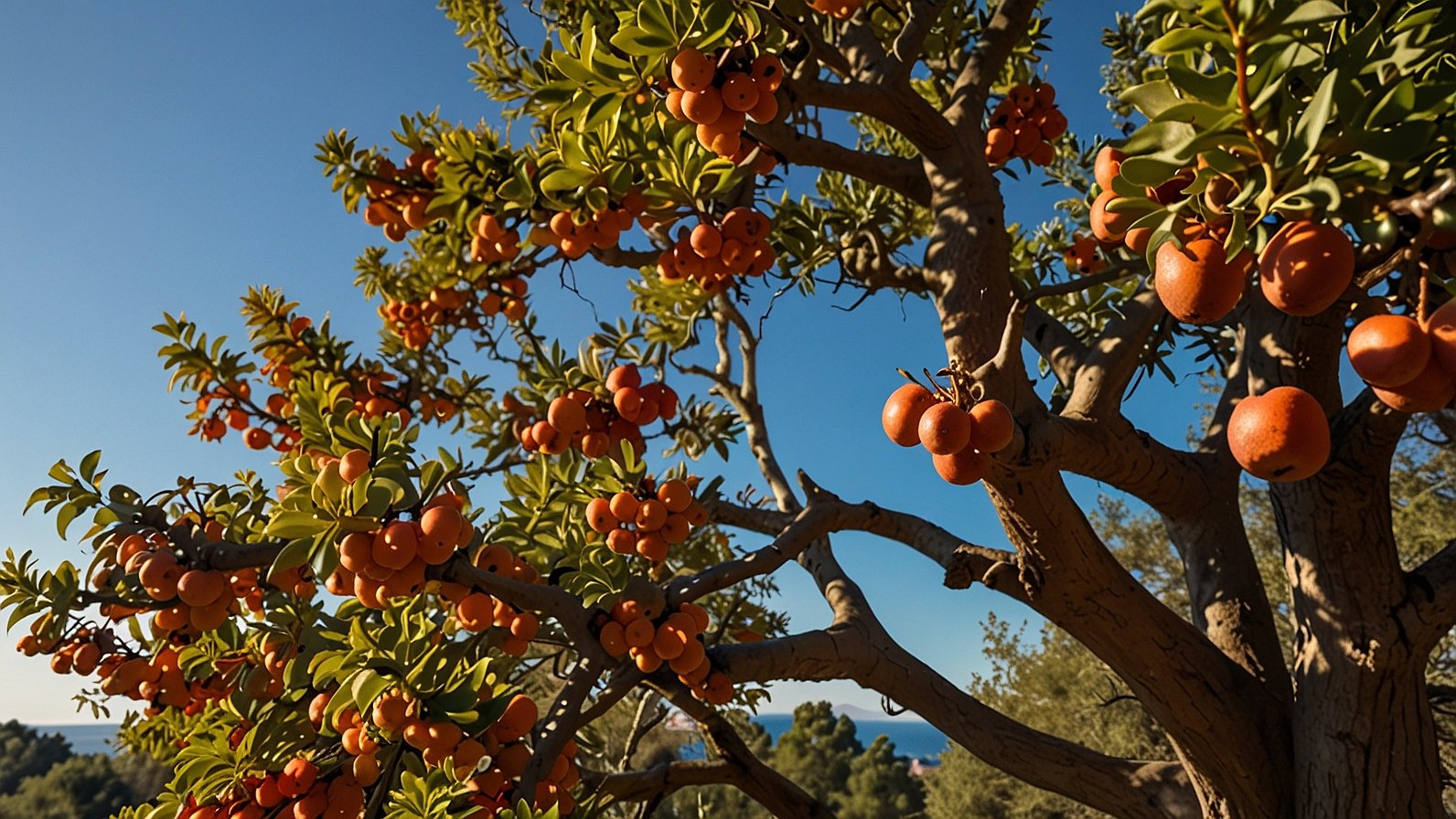Hook: What if I told you a humble fruit cultivated for over 4,000 years – mentioned even in ancient Chinese texts and Roman chronicles – might be the most underrated superfood in your local market? Meet žižole, the tiny powerhouse often overlooked next to flashier berries, yet packing a nutritional punch and a history richer than most.
What Exactly Are Žižole?
Let’s clear up the name game first. You might know them as jujubes, Chinese dates, red dates, or by their scientific name, Ziziphus jujuba. Žižole (pronounced roughly “zhee-zho-leh”) is a name you’ll often hear in parts of Europe, especially the Balkans, for these remarkable fruits. Forget the gummy candy association – real žižole are something entirely different and far more fascinating.
Think of a small, olive-sized fruit growing on a hardy, spiny tree. When freshly picked, they’re crisp like an apple with a subtle sweetness. Leave them to dry? They transform into chewy, date-like morsels with a deeper, richer caramel-honey flavor. That incredible versatility is just the beginning of their charm.
From Tree to Table:
- The Tree: A tough cookie! The Ziziphus jujuba thrives in hot, dry climates and poor soil where other fruit trees struggle. It’s deciduous, losing its leaves in winter, and often develops beautifully gnarled branches over time.
- The Fruit: Starts smooth and green, ripening through yellow to a gorgeous reddish-brown or deep mahogany when fully mature. Inside, a single pit (like a date pit) is surrounded by edible flesh.
Why Your Body Will Thank You for Eating Žižole
Move over, trendy berries! Žižole have been a cornerstone of Traditional Chinese Medicine (TCM) for millennia, and modern science is starting to catch up on why. They’re not just tasty; they’re nutritional dynamos.
Boldly Beneficial: Key Health Perks
- Immune System’s Best Friend: Packed with Vitamin C (way more than apples or oranges, gram for gram!), žižole are like nature’s immune-boosting capsules. Perfect for fending off those seasonal sniffles.
- Sleep & Stress Support: Struggling to unwind? Traditional uses highlight žižole’s mild calming properties. Compounds like flavonoids and saponins might help soothe the nervous system – think of it as a gentle, natural lullaby for your busy mind. Enjoy a handful of dried jujubes or some jujube tea (like the popular “An Mian” blends from brands like Plum Dragon Herbs) in the evening.
- Digestive Harmony: Rich in fiber, especially when dried, žižole act like a gentle broom for your digestive tract. They’ve been used traditionally to ease constipation and support overall gut health – nature’s digestive aid!
- Antioxidant Arsenal: Those deep red hues signal a high concentration of antioxidants (flavonoids, polyphenols, vitamin C). These are your body’s defense crew, fighting off damaging free radicals linked to aging and chronic disease.
- Natural Energy, No Crash: Offering complex carbs, B vitamins, and minerals like potassium and iron, dried žižole provide sustained energy – a far cry from the sugar rush and crash of candy bars.
Myth Buster: “Are jujubes just like dates?” While similar in texture when dried and both healthy, žižole offer a distinct flavor (less intensely sweet, more apple/vanilla notes) and a notably higher Vitamin C and certain antioxidant profile.
From Snacks to Gourmet: How to Enjoy Žižole
The beauty of žižole lies in their culinary flexibility. Here’s how to bring this ancient fruit into your modern kitchen:
Boldly Delicious: Ways to Savor Them
- Snack Attack: The simplest way! Grab a handful of dried žižole (find them at health food stores, Asian markets, or even Trader Joe’s often stocks them as “dried jujube”). They’re satisfyingly chewy and naturally sweet.
- Tea Time Tranquility: Simmer dried žižole (sliced or whole, pitted) in water for 15-20 minutes. Strain, sip, and relax. Add a slice of ginger or a cinnamon stick for extra warmth. Brands like Prince of Peace offer convenient jujube tea bags.
- Sweeten Naturally: Puree soaked dried žižole and use the paste to naturally sweeten oatmeal, yogurt, energy balls (swap out dates!), or even baked goods. It adds depth without refined sugar.
- Savory Surprises: Don’t limit them to sweets! In Chinese cuisine, dried jujubes are often added to soups, stews (like hearty bone broths), and braised meats (try them in a pork belly dish) for a touch of sweetness and complexity.
- Fresh & Crisp: If you’re lucky enough to find fresh žižole (look in late summer/fall at farmers’ markets or specialty grocers), enjoy them like mini apples. They’re refreshingly crisp with a delicate sweetness.
Fresh vs. Dried Žižole – A Quick Comparison
| Feature | Fresh Žižole | Dried Žižole |
|---|---|---|
| Texture | Crisp, apple-like | Chewy, dense, date-like |
| Flavor | Mildly sweet, slightly tart | Concentrated sweetness, caramel/date notes |
| Shelf Life | Short (days to a week) | Very long (months+) |
| Best Uses | Snacking, salads | Snacking, teas, cooking, baking |
| Vitamin C | Highest when fresh | Lower (some loss in drying) |
| Fiber | Good source | Excellent source (concentrated) |
Can You Grow Your Own Žižole?
Absolutely! One of the most compelling things about the žižole tree is its resilience.
Boldly Resilient: The Grower’s Advantage
- Climate Champions: These trees laugh in the face of drought and heat. They thrive in USDA zones 6-10 (some varieties even in 5), making them perfect for water-wise gardens. Think Mediterranean or sunny, well-drained spots almost anywhere.
- Low Maintenance: Once established, they need minimal care. They’re pest-resistant and generally disease-free. Pruning is mostly for shape or to manage thorny branches (wear gloves!).
- Ornamental Plus: Beyond the fruit, they make attractive landscape trees with interesting bark and a pleasant, spreading form. Small yellow flowers in summer attract pollinators.
- Getting Started: Purchase a named variety (like ‘Li’ for large, sweet fruit or ‘Lang’ for reliability) from a reputable nursery (Stark Bros, One Green World often carry them). Plant in full sun, well-drained soil, and water regularly only for the first year or two. Patience is key – it might take 3-5 years for significant fruiting, but then you’re set for decades!
More Than Just a Fruit: The Cultural Tapestry of Žižole
Žižole aren’t just sustenance; they’re woven into the cultural fabric of many societies.
Boldly Symbolic: Roots in Tradition
- Ancient Healers: In TCM, žižole (known as Da Zao or Hong Zao) are considered a “harmonizing” herb, used in countless formulas to nourish the spleen and stomach, calm the spirit, and tonify Qi (vital energy). They’re one of the most commonly used herbs in the entire TCM pharmacopeia.
- Symbols of Luck & Prosperity: In China and Korea, jujubes are often included in wedding ceremonies and New Year celebrations, symbolizing fertility, good fortune, and a sweet life ahead. You might find them strung on red threads or incorporated into festive desserts.
- Mediterranean Staple: From Greece and Italy to Croatia and Serbia (žižole!), the dried fruit has been a valuable winter food source and natural remedy for centuries, often featured in local folk medicine for sore throats and digestive woes.
- Global Journey: From their origins in Southwest Asia, cultivation spread along ancient trade routes – the Silk Road played a huge role – reaching Europe centuries ago and later the Americas. Their adaptability ensured their survival and integration into local cuisines.
Bringing Žižole Magic into Your Life: Simple Steps
Ready to embrace this ancient superfruit? Here’s your practical starter kit:
- Find Them: Start with dried. Check health food stores (Whole Foods, Sprouts), Asian grocery stores (H Mart, 99 Ranch), or online retailers (Amazon, nuts.com). Look for plump, unblemished fruits.
- Snack Smart: Swap your afternoon candy bar for a small handful of dried žižole. Your energy levels and gut will notice the difference.
- Brew Calm: Make a simple žižole tea. Simmer 5-6 dried fruits (pitted) in 2 cups of water for 15 mins. Strain. Add honey if desired. Sip before bed.
- Cook Creatively: Add chopped dried žižole to your next batch of oatmeal, homemade granola, or stew. Or blend soaked ones into a natural sweetener paste.
- Consider a Tree: If you have a sunny spot, research a žižole variety suitable for your climate. It’s a rewarding, low-care investment in future harvests.
Žižole are a testament to nature’s brilliance: delicious, incredibly nutritious, remarkably resilient, and steeped in human history. They’re not just a fruit; they’re a connection to ancient wisdom and a simple, powerful tool for modern wellness. Whether you enjoy them as a chewy snack, a calming tea, or eventually pluck them from your own tree, these little gems deserve a place in your pantry and perhaps even your garden.
What’s your experience with žižole or jujubes? Have you tried them? Do you have a favorite way to eat them or a family recipe? Share your thoughts in the comments below!
FAQs
What do žižole taste like?
Fresh žižole are crisp and mildly sweet-tart, similar to a very mild apple. Dried žižole become chewy with a much deeper, sweeter flavor reminiscent of dates, often with hints of caramel or apple.
Are žižole good for sleep?
Yes! Traditionally used for calming and sleep support, compounds in žižole (like saponins and flavonoids) may have mild sedative effects. Drinking jujube tea in the evening is a popular practice for promoting relaxation.
Where can I buy žižole?
Dried žižole (jujubes, Chinese dates) are widely available:
Health food stores (Whole Foods, Sprouts)
Asian grocery stores (H Mart, 99 Ranch)
Larger supermarkets (often in the dried fruit/nut or international aisle)
Online retailers (Amazon, nuts.com, specialty health sites)
Fresh ones are seasonal (late summer/fall) and found at farmers’ markets or specialty produce stores.
How do I use dried žižole?
Enjoy them straight as a snack, simmer them to make tea, chop and add to oatmeal/granola/baking, use in stews and braises, or puree (after soaking) as a natural sweetener. Remember to remove the pit before eating or cooking!
Can I grow a žižole tree in my climate?
Žižole trees (Ziziphus jujuba) are incredibly hardy. They thrive in hot, dry summers and cold winters (USDA zones 6-10, some varieties in zone 5). They need full sun and well-drained soil. Check with local nurseries for varieties suited to your area.
What’s the difference between žižole, jujubes, and Chinese dates?
They are all names for the same fruit from the Ziziphus jujuba tree! “Žižole” is common in parts of Europe (like the Balkans), “jujube” is the common English name, and “Chinese date” refers to their date-like appearance and use when dried.
Are žižole high in sugar?
Dried žižole are naturally sweet and contain natural sugars (like fructose and glucose), similar to other dried fruits like dates or figs. While nutrient-dense, enjoy them in moderation as part of a balanced diet, especially if watching sugar intake. Fresh žižole are lower in sugar.

